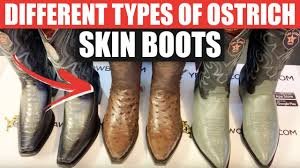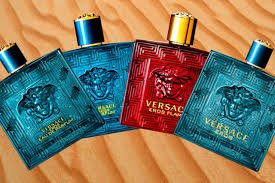
ostrich skin boots
The Unique Nature of Ostrich Skin
Ostrich skin is regarded as one of the most luxurious exotic leathers in the fashion industry. Its signature feature—the raised quill pattern—sets it apart from all other leathers. These quills result from the feather follicles that remain visible even after the tanning process, giving the leather an instantly recognizable texture. Ostrich leather is known not only for its aesthetic richness but also for its softness, flexibility, and incredible strength. Unlike other leathers that may crack or dry out over time, ostrich skin contains natural oils that help it remain supple for decades. This combination of beauty and resilience is what makes ostrich skin boots so desirable among boot enthusiasts, collectors, and fashion-forward consumers.
A Brief History of Ostrich Leather Use
While ostriches have been native to Africa for millennia, their skin was not widely commercialized until the 19th and 20th centuries. Originally, ostrich farming was centered around feather production, which was highly popular in European fashion. But as the demand for exotic leather grew, farmers and tanners began to recognize the value of ostrich hide. The tanning techniques were refined to enhance the leather’s durability and texture. By the mid-20th century, ostrich leather had gained immense popularity in the luxury footwear industry, especially in regions like Texas and Mexico, where cowboy and Western-style boots were already a strong cultural staple. Once celebrities, rodeo stars, and country musicians began wearing ostrich boots, their status as high-end fashion items was solidified.
Why Ostrich Skin Boots Are So Valuable
There are several reasons why ostrich skin boots command such high respect and price in the footwear market. First and foremost is their exceptional durability. Ostrich leather is not only stronger than cowhide, but it’s also far more flexible, allowing for boots that mold comfortably to the wearer’s feet over time. Secondly, the distinct texture gives each pair of boots a unique visual identity—no two hides are ever exactly alike. The natural oils within the leather help prevent it from becoming brittle, even under harsh weather conditions. Additionally, ostrich boots are considered a symbol of prestige. Wearing them reflects a sense of refinement, success, and attention to detail, much like wearing a tailored suit or a Swiss-made watch.
Types of Ostrich Leather Used in Boots
There are three main types of ostrich leather used in bootmaking, each with its own characteristics:
1. Full Quill Ostrich: This is the most expensive and prized type, featuring the full, raised quill pattern across the vamp (top part of the boot). Its texture and appearance are bold and unmistakable.
2. Smooth Ostrich (or Ostrich Leg): This leather comes from areas without quill follicles, such as the legs. It has a reptilian-like appearance and is often used for trims or accents.
3. Combination (Full Quill with Smooth Parts): Many bootmakers use both types in one boot for contrast—full quill on the vamp, and smooth ostrich on the shaft or heel.
Boot enthusiasts often prefer full quill ostrich for its luxurious look and texture, although the other variants are also appreciated for their uniqueness and design appeal.
Craftsmanship and the Making of Ostrich Skin Boots
Creating a pair of ostrich skin boots is a meticulous process that involves skilled artisans, precision tools, and time-honored techniques. After the raw ostrich hide is cleaned and tanned, it is graded based on quality, with grade one hides being used for high-end boots. The leather is then cut carefully, preserving the natural pattern and avoiding imperfections. Craftsmen stitch the hides onto custom boot lasts, then form the vamp, shaft, and heel to the required size. Hand-stitching, polishing, and finishing touches are added, often with decorative stitching or exotic overlays. The entire process can take several days to weeks, depending on the complexity of the design and the level of customization. Top brands such as Lucchese, Tony Lama, and Rios of Mercedes are known for their handmade ostrich boots that embody superior craftsmanship.
How to Style Ostrich Skin Boots
One of the most attractive features of ostrich skin boots is their versatility. These boots can be dressed up or down, depending on the occasion. For a Western or cowboy look, pair them with denim jeans, a button-down shirt, and a cowboy hat. For a more elegant or urban style, ostrich boots in black or deep brown can complement tailored trousers, a blazer, or even a leather jacket. Some fashion-forward individuals wear ostrich boots with business casual or even formal wear, using them as a statement piece. The key is to let the boots speak—because of their distinct texture and shine, they naturally become the highlight of any outfit.
Proper Care and Maintenance of Ostrich Leather Boots
To preserve the luxury and durability of your ostrich skin boots, proper maintenance is essential. First, always clean them gently after use using a soft, dry cloth to remove dust and debris. Avoid harsh chemicals or soap, as they can strip the leather of its natural oils. Instead, use a leather conditioner specifically designed for exotic leathers. Conditioning every 4 to 6 weeks helps keep the leather supple and prevents cracking. It’s also wise to use boot trees to maintain the shape of the boots when not in use. Store them in a cool, dry place, away from direct sunlight. If they become wet, allow them to air dry naturally, and never place them near a heat source. With the right care, a good pair of ostrich boots can last decades, becoming softer and more comfortable with each wear.
Price Range and Where to Buy
Ostrich boots fall into the premium footwear category, with prices typically starting at around $400 and going up to $2000+ depending on the brand, design, and type of ostrich leather used. Full quill ostrich boots are generally more expensive due to their rarity and visual impact. You can find genuine ostrich boots at Western wear retailers, luxury department stores, and directly from high-end bootmakers online. Be cautious of imitations—some sellers offer “ostrich print” or embossed cowhide that only mimics the look but lacks the true feel and quality of real ostrich leather. Always check for authenticity and customer reviews before making a purchase.
Ethical Considerations and Sustainability
As the demand for exotic leathers has increased, so has the attention to ethical sourcing and sustainability. Most ostrich leather used in the fashion industry today comes from regulated farms, particularly in South Africa, which are subject to strict animal welfare and environmental standards. These farms often use the entire animal, minimizing waste and supporting sustainable practices. Nonetheless, it’s important to buy from brands that are transparent about their sourcing. Ethical consumerism is not just about avoiding cruelty—it’s also about supporting responsible industries that contribute positively to local economies and ecosystems.
Conclusion: Why Ostrich Skin Boots Remain Timeless
In the world of exotic leather footwear, ostrich skin boots continue to hold a place of honor. They represent the perfect union of rugged durability and refined elegance. Whether you’re a cowboy, a city dweller with taste, or someone looking to invest in statement footwear, ostrich boots offer comfort, style, and status. With proper care, they become not only a long-lasting accessory but also a reflection of individual identity and appreciation for craftsmanship. As trends evolve, the allure of ostrich leather remains unwavering—timeless, tasteful, and utterly iconic.






